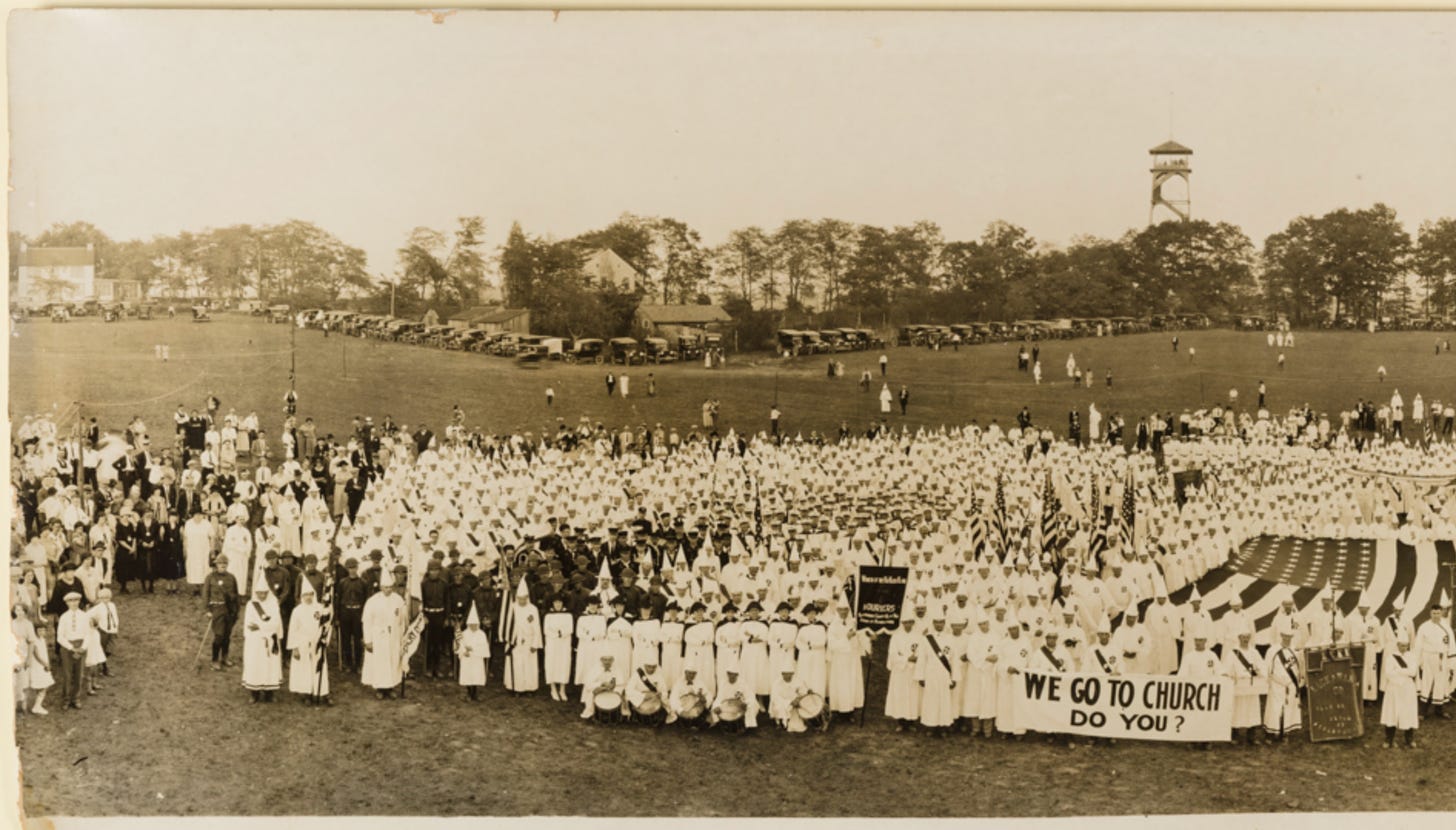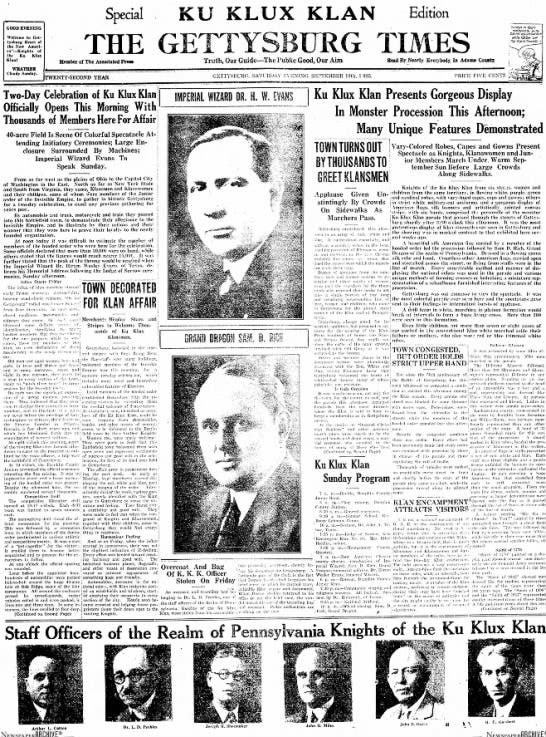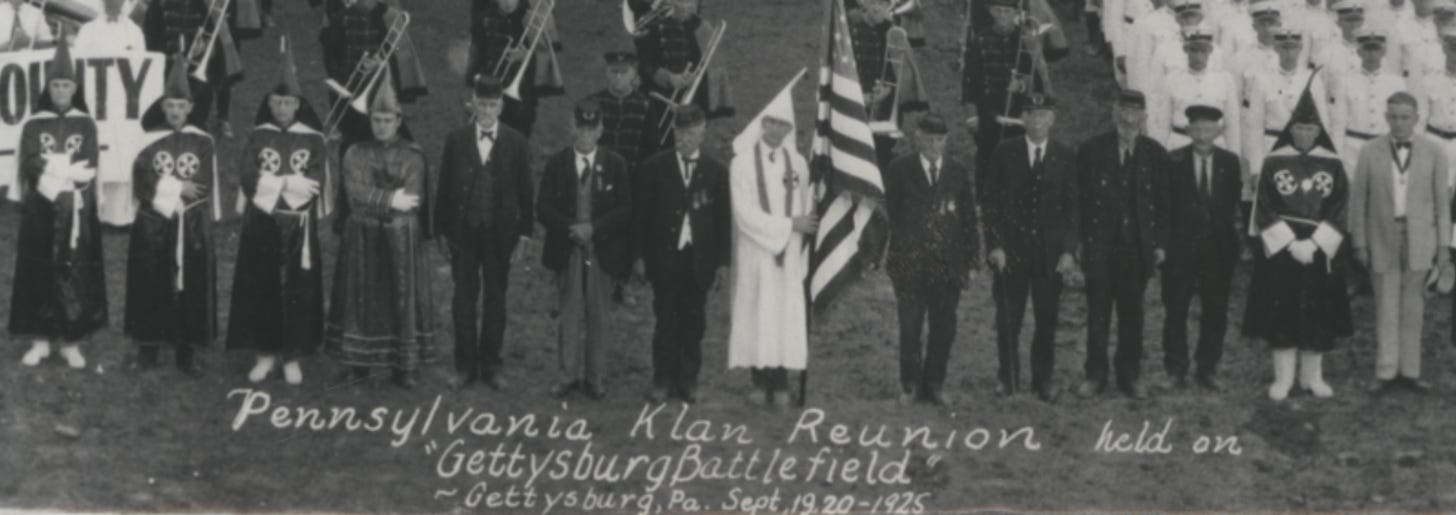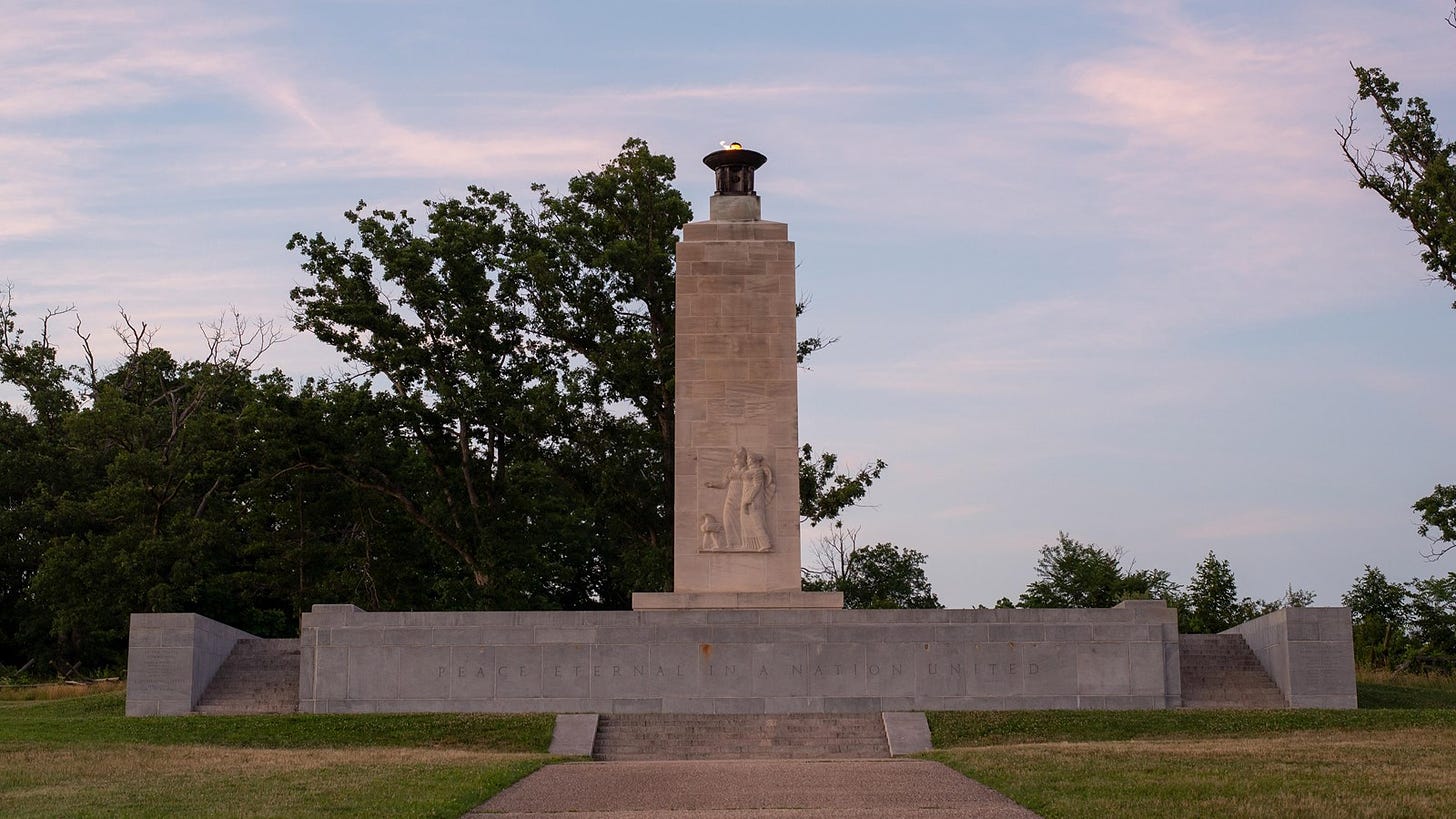I am extending the 1-year anniversary sale for one more day. Special thanks to those of you who have upgraded and thanks once again to all of you for your support.
Have a great week.
Of course, it’s both.
You could spend all your time on the battlefield exploring the events of July 1-3, 1863 in all its detail, but that would only scratch the surface of this landscape’s rich history.
I’ve been thinking a lot about this as I continue to work on an essay about the importance of interpreting slavery and race at Civil War battlefields like Gettysburg.
These landscapes should be interpreted broadly to acknowledge the ways in which Americans have attempted to make meaning of the battle, the war, and the broader sweep of American history.
The most obvious example of this broader interpretive vision is best represented by the monuments themselves that dot our many Civil War battlefields. Gettysburg is arguably the best example, beginning with the Union monuments and position markers that were dedicated after the war.
The monuments tell us much more about how Americans chose to remember the past than they do about the historical events commemorated. I would suggest that these later commemorative events are just as important as the history of the battle itself.
In addition to monuments, Union and Confederate veterans traveled to Gettysburg as war clouds gathered overseas in 1913 and 1938. They were not the only groups who gathered on the battlefield to find meaning in the present by commemorating the past.
In 1925 the Ku Klux Klan held its annual meeting in Gettysburg. It was estimated that roughly 15,000 Klansmen from six states attended the meeting.
The Gettysburg Times published a special edition welcoming the Klan on September 19: “By automobile and truck, motorcycle and train they poured into this battlefield town,” the newspaper reported, “to demonstrate their allegiance to the Invisible Empire, and to illustrate by their actions and their manner that they were here to prove their loyalty to the newly founded organization.”
The Klan gathered on the battlefield on Oak Ridge, near where the Eternal Peace Light Memorial would be dedicated as part of the 75th anniversary of the battle in 1938.

A wider shot of the group shows what appears to be Union veterans standing proudly among the men in white robes. What does this tell us about how these veterans remembered the war or this particular battle?
Today the Eternal Peace Light Memorial dominates Oak Ridge. President Franklin D. Roosevelt delivered a brief address that emphasized the importance of reunion and patriotism. Etched into the memorial are the words: “Peace Eternal in a Nation United.”
There is no wayside marker on the battlefield acknowledging the Klan’s 1925 reunion, but there certainly should be. I would suggest that a wayside marker acknowledging this event is just as important as any marker that tells the story of “Pickett’s Charge” or the Union defense of Little Round Top and Culp’s Hill.
It was no accident that the Klan chose to gather on the Gettysburg battlefield. Their hate-filled and restrictive vision of the nation was reinforced on the battlefield’s quiet fields—echoes of which that can still be heard today.
The lessons of 1925 are just as important for Americans to heed as are the lessons of 1863.







Very thoughtful piece. I've only been to Gettysburg once and found all the monuments distracting as I tried to visualize the battle. It would be very interesting to go again and focus on the monuments and post-1863 history of the site.
Thanks for the photo of the newspaper; it's nice to know the US has progressed far enough that reputable news sources don't celebrate visits from the KKK and KKK officers aren't keen for the faces and names to be publicized.
Whoa, the Klan gathered at Gettysburg? I had no idea. I've vlisited Gettysburg at least a dozen times, starting in childhood in the 1950s.
My dad was what was then called a "Civil War buff." We had relatives not far from Gettysburg and often went to the battlefield whole visiting them. As an adult, I took both my first and second husbands there, and last visited briefly 3 years ago at Thanksgiving. Every time we felt profoundly moved.
I've also read quite a bit about the battle. Never have I seen a thing about the Klan there. How depressing that the town newspaper welcomed them.
I look forward to seeing a monument or some acknowledgment of this event next time I visit.